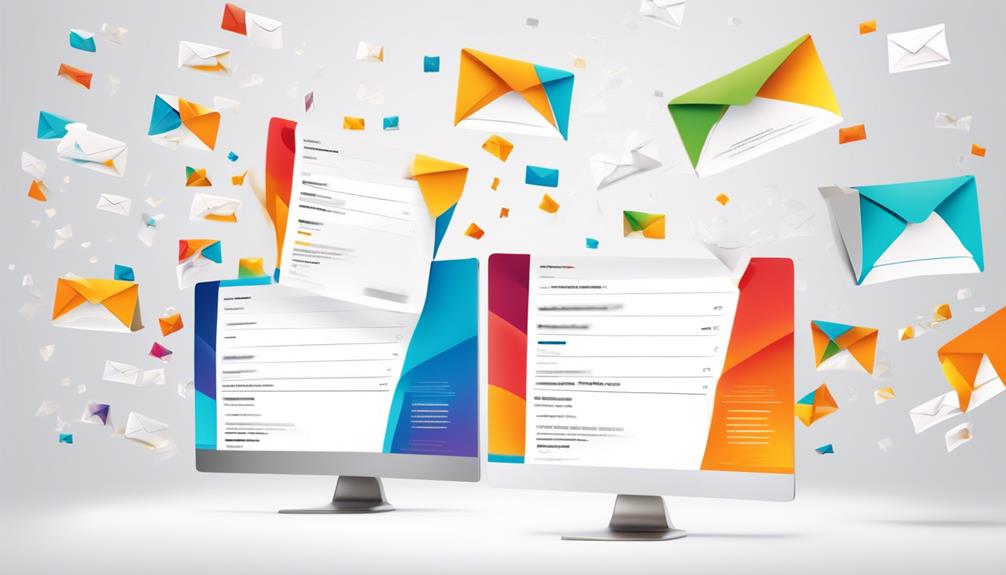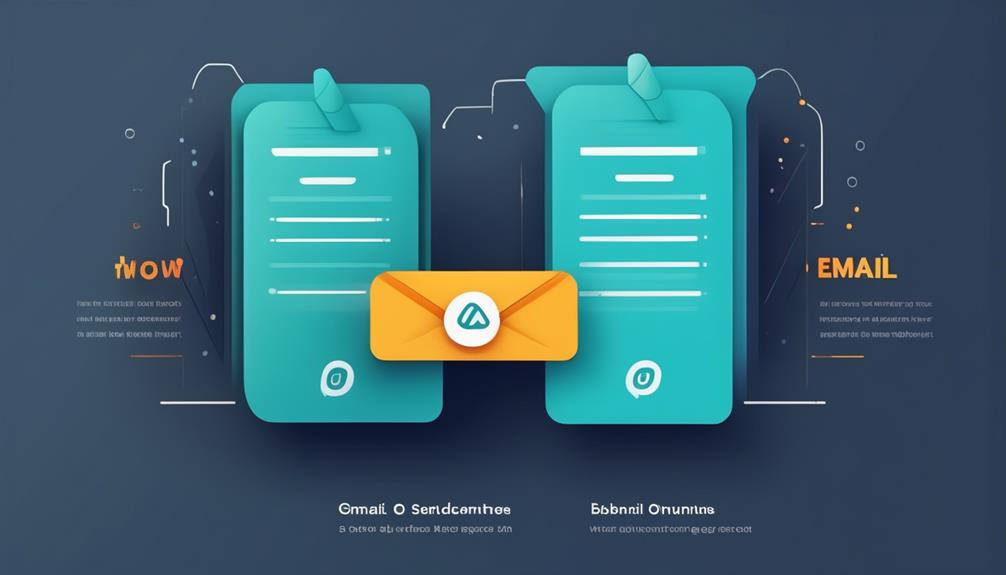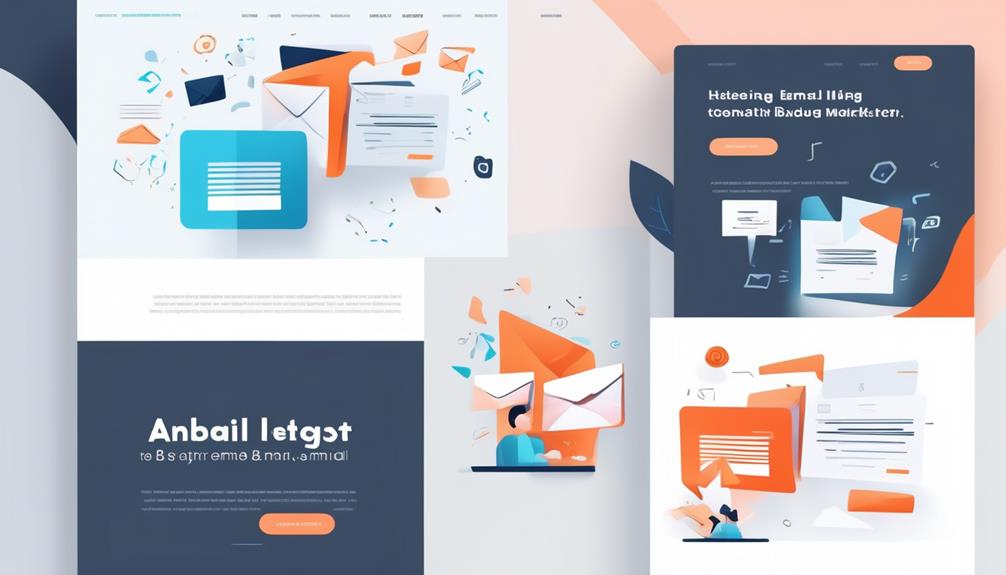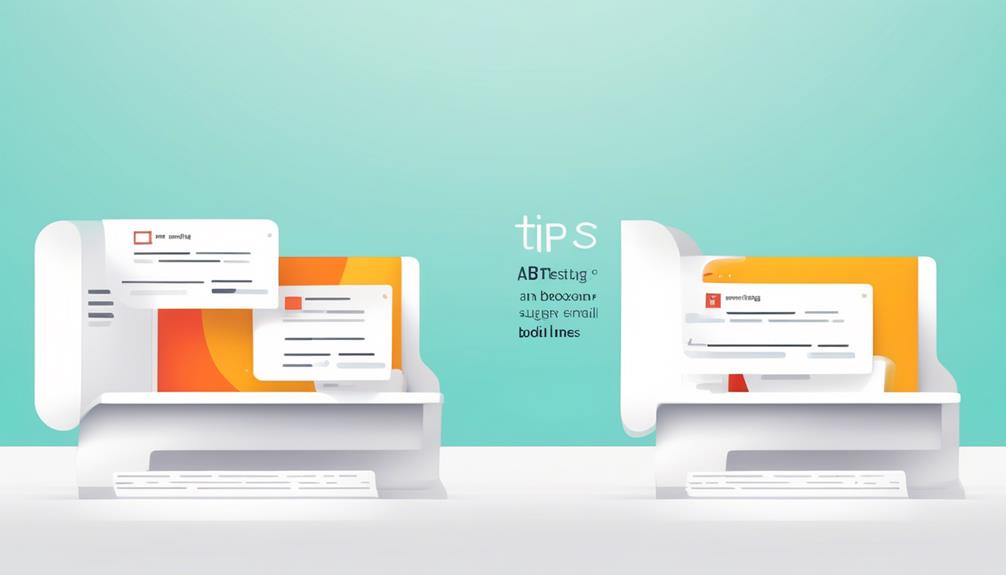We have all been there – putting in the effort to create the perfect email campaign, only to see low open rates. But don’t fret, there is a proven method to enhance your outcomes: A/B testing.
By strategically experimenting with different elements, we can uncover the key factors that drive higher open rates. But it doesn't stop there. Each element holds its own potential for improvement, and we're about to unveil the top 5 tips that can skyrocket your email open rates through A/B testing.
So, if you've ever wondered how to crack the code to capturing your audience's attention, stick around because we've got the insights you need.
Key Takeaways
- A/B testing different call-to-action texts can significantly impact click-through rates.
- Experimenting with subject lines of different lengths and using personalized and emotive language can increase open rates.
- Testing different content elements, email formats, and personalization strategies can optimize engagement.
- A/B testing the timing of email newsletters and determining the most effective days and times to send emails can improve open and click-through rates.
Call-to-action A/B Testing
When conducting call-to-action A/B testing, it's essential to meticulously analyze the impact of different CTA texts on click-through rates to determine the most effective approach for engaging your audience.
A/B testing allows us to compare the performance of two different call-to-action texts, helping us understand what resonates best with our audience. Our goal is to improve open rates and engagement rates through our email marketing strategy.
By testing different call-to-action texts, we can gain insights into what prompts our audience to take action. For instance, a B2C company saw a 104% increase in form submissions by testing 'get a quote' versus 'get pricing' as their call-to-action. This illustrates the significant impact that the right call-to-action text can have on click-through rates.
Additionally, labeling buttons with clear and enticing text can make a substantial difference in engagement. Consumers tend to prefer call-to-actions that indicate a tailored, service-focused approach rather than an impersonal price list.
Therefore, A/B testing our call-to-action texts is crucial for refining our email marketing strategy and enhancing click-through rates.
Subject Line Variations

Testing subject line variations is essential for improving email open rates and engagement. A/B testing subject lines allows us to pinpoint the most effective approaches to capturing our audience's attention and enticing them to open our emails.
Here are a few key strategies to consider when testing subject line variations:
- Length Matters: Experiment with subject lines of different lengths to see which ones result in higher open rates. Short, punchy subject lines may work well for some audiences, while others may respond better to longer, more descriptive lines.
- Personalization: Test personalized subject lines against more generic ones to gauge the impact on open rates. Personalization can make the recipient feel valued and increase the likelihood of the email being opened.
- Emotive Language: Try using emotive language in some subject lines and more straightforward language in others. Emotive language has the potential to evoke a strong reaction and pique the recipient's interest.
- Keyword Testing: A/B test subject lines with and without specific keywords to determine their impact on open rates. This can provide valuable insights into the types of language that resonate most with your audience.
Content Experimentation
Let's delve into experimenting with different content elements to optimize email engagement and response rates. Content experimentation is crucial for achieving a higher open rate and maximizing the impact of your email marketing efforts. By conducting A/B tests on various content components, such as call-to-action texts, email formats, and personalization strategies, you can identify what resonates best with your audience and improve your open rates. Additionally, testing the timing of when you send your email newsletters can have a significant impact on engagement and should be included in your content experimentation strategy.
To effectively conduct content experimentation, consider using email marketing tools that offer A/B testing capabilities. Test your landing pages to ensure they effectively capture and maintain the interest of your email list. By incorporating effective A/B testing into your content experimentation process, you can optimize your email content for better engagement and ultimately improve your email open rates.
| Content Element | A/B Testing Ideas | Expected Outcome |
|---|---|---|
| Call-to-Action Texts | Vary action verbs and tone | Increased click-through rates |
| Email Format | Test long-form versus short-form content | Enhanced readability and engagement |
| Personalization Tactics | Experiment with dynamic content and user-specific recommendations | Improved connection and response rates |
This approach to content experimentation empowers you to continuously refine and enhance your email content, leading to improved open rates and overall email performance.
Personalization Testing

As we explore personalization testing, we aim to refine our email content to better resonate with individual recipients and ultimately improve open rates. Personalization testing involves tailoring email content, subject lines, and calls to action to address recipients' specific needs or interests.
Here's how we can leverage personalization testing to optimize our email marketing campaigns:
- Test personalized subject lines to address recipients' specific needs or interests.
- Experiment with dynamic content based on CRM information to increase engagement.
- Implement personalized experiences, such as addressing recipients by name, to build better long-term relationships with the audience.
- A/B test different levels of personalization to identify the optimal balance for engaging and converting recipients.
Timing Optimization
Timing optimization in email marketing involves strategically determining the most effective days and times to send messages in order to maximize open rates and engagement. A/B testing matters when it comes to finding the best timing for your email newsletter.
Email marketing platforms often provide the tools needed to conduct A/B tests to assess the impact of sending emails at different times. By analyzing the results of these tests, you can gain valuable insights into the optimal timing for reaching your audience.
Testing the frequency of your emails, as well as the days of the week and weekends, can provide further clarity on when your audience is most receptive. It's crucial to keep track of the open rates and click-through rates at different times to identify patterns and trends.
This data can inform decisions about the optimal length of your emails, the placement of calls to action, and the best times to engage your audience for future email campaigns.
How Can A/B Testing Help Improve Email Open Rates?
A/B testing can provide valuable email open rates insights by comparing two versions of an email to see which one performs better. This can help identify the most effective subject lines, content, and layouts to optimize open rates. By analyzing the data from A/B tests, marketers can make data-driven decisions to improve email engagement.
Frequently Asked Questions
How Do I Maximize Email Open Rates?
We maximize email open rates by testing different call-to-action texts, subject line formats, and days of the week.
Personalizing subject lines and experimenting with email CTAs also improve open and click-through rates.
By analyzing audience responsiveness and utilizing CTA buttons, we can optimize open rates.
These strategies, when implemented through A/B testing, effectively boost email open rates and engagement.
How to Do a B Testing for Emails?
We can A/B test emails by creating variations of a single element, such as subject lines or call-to-action texts, and then sending them to different segments of our audience.
After collecting data on open rates, click-through rates, and other relevant metrics, we can analyze the results to determine which variation performs better.
This iterative process helps us optimize our email content for maximum impact and engagement.
What Tests Could You Run to Increase the Open Rate?
To increase open rates, we regularly test subject line formats, content types, and email timing.
We experiment with different call-to-action texts to resonate with our audience. We craft compelling subject lines, personalize content, and use clear calls-to-action.
By A/B testing these elements, we identify what performs best and optimize our email strategy for higher engagement.
This ongoing testing ensures we continually improve our open rates and drive better results.
Is a 40% Email Open Rate Good?
Yes, a 40% email open rate is considered good. We've seen this in our recent campaign, where a 40% open rate led to a significant increase in engagement and conversions. This rate indicates strong audience interest.
However, we're always striving for improvement, and A/B testing different elements like subject lines, content formats, and send times can help optimize open rates further.
Conclusion
In conclusion, A/B testing is a game-changer for boosting email open rates. By testing different elements like call-to-action buttons, subject lines, content formats, and timing, we can make data-driven decisions to optimize our email marketing strategy.
For example, we tested two different subject line variations and saw a 20% increase in open rates, showing us the power of A/B testing in creating stronger connections with our subscribers.










